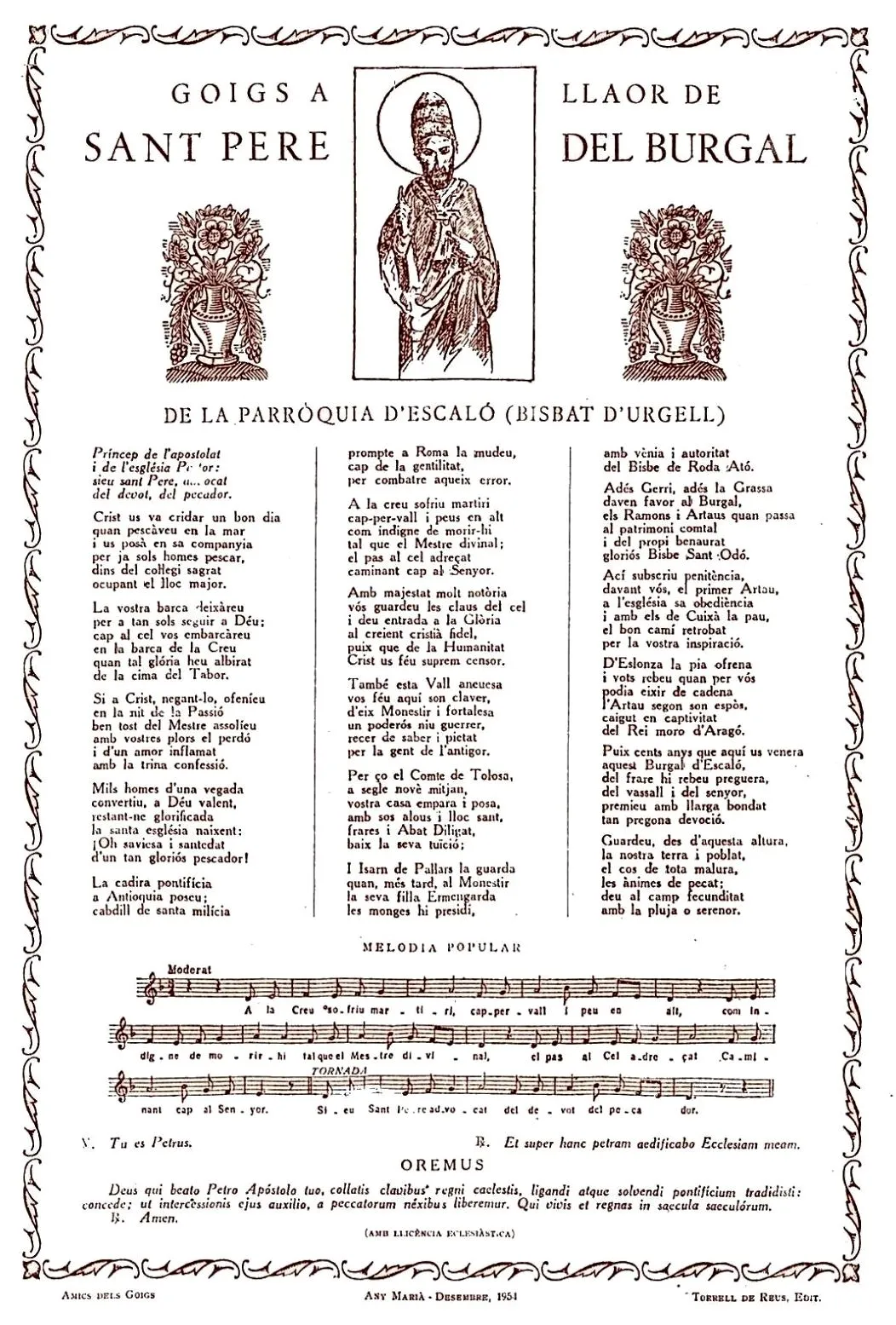Heritage
Sant Pere del Burgal
Introduction
The Monastery of Sant Pere del Burgal is a historical and architectural treasure located in the region of Pallars Sobirà, in the province of Lleida, Catalonia, Spain. This monastery, dating back to the 9th century, is an impressive example of Romanesque art and architecture in Catalonia and has played a significant role in the religious and cultural history of the region.
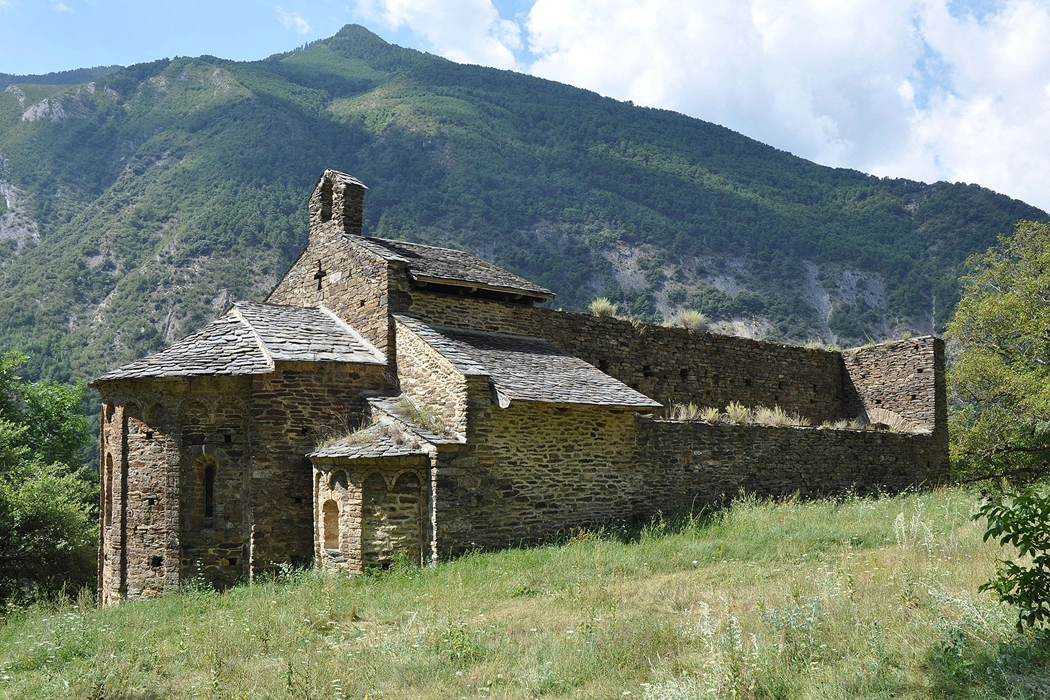
Origins and Foundation
The Monastery of Sant Pere del Burgal was founded in 859 by the Count of Pallars, Ramon I, and his wife Ermessenda. Initially, the monastery served as a center of monastic and spiritual life, following the rule of Saint Benedict. Over the centuries, the monastery underwent various modifications and expansions, reflecting changes in architectural style and the needs of the monastic community.
Romanesque Architecture
The monastery is known for its Romanesque architecture, characterized by its simplicity and robustness. The church, built in the 11th century, is one of the most notable elements of the monastic complex. It features a basilica plan with three naves separated by pillars and covered with barrel vaults. The church’s head has three semicircular apses, decorated with frescoes and typical Romanesque sculptural motifs.
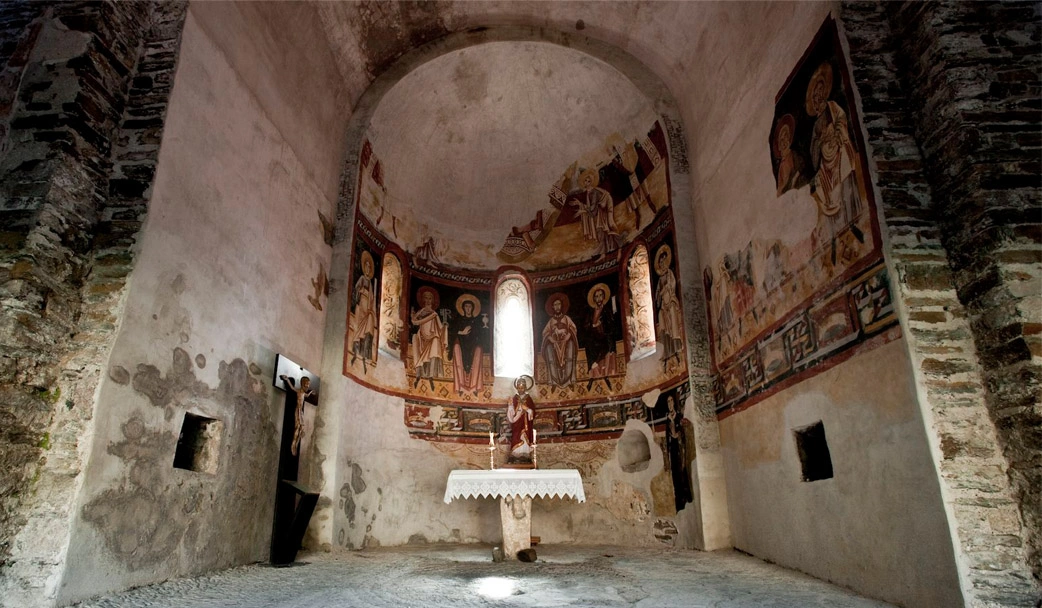
Frescoes and Decoration
One of the most remarkable aspects of the Monastery of Sant Pere del Burgal is its frescoes, dating back to the 11th century. These frescoes, of great artistic value, depict biblical scenes and figures of saints and are a testament to the mastery of medieval artists. A valuable set of mural decorations from this site is now housed in the National Art Museum of Catalonia in Barcelona. This work is associated with the Master of Pedret and is believed to date between the 11th and 12th centuries. The apse contains a Pantocrator surrounded by archangels and prophets (much deteriorated), between the windows there is a band with the Virgin Mary and five apostles (very well preserved), and at the bottom, the depiction of the Countess of Pallars, Lucia de la Marca, as a donor.
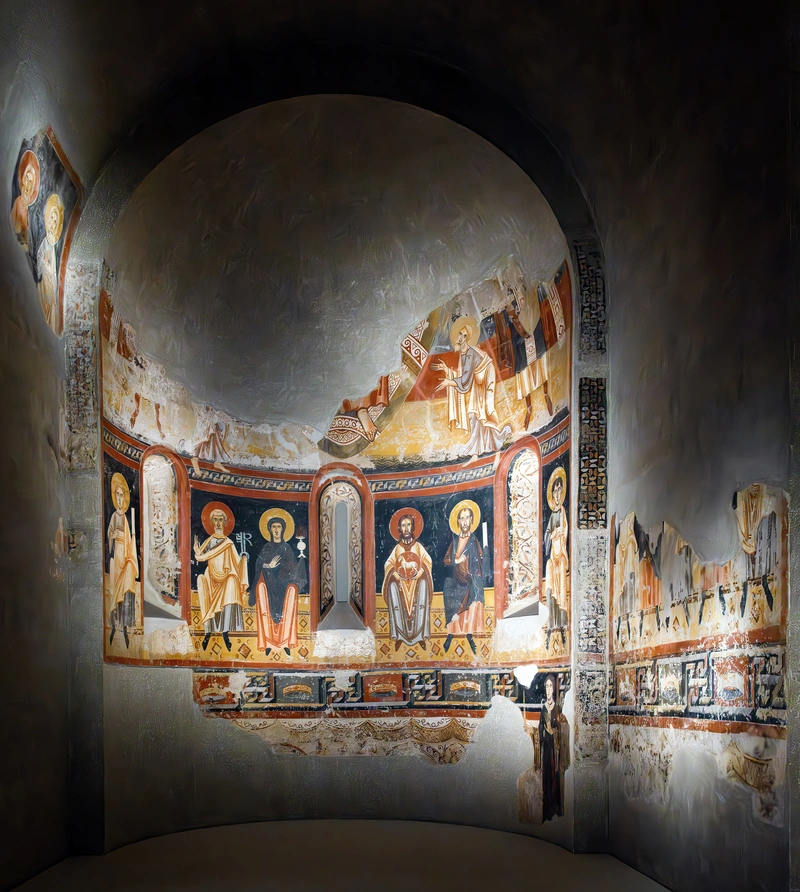
Master of Pedret
The Master of Pedret is an anonymous painter active during the 11th and 12th centuries, known for his masterpieces in the field of Romanesque painting in Catalonia. This artist is named for his association with the mural paintings of the Church of Sant Quirze de Pedret, located in the region of Berguedà. Although there is no concrete information about his identity, his artistic style has been recognized and associated with several important works, including the mural paintings of the Monastery of Sant Pere del Burgal.
In the context of the Monastery of Sant Pere del Burgal, the Master of Pedret is known for creating a set of frescoes located in the central apse of the monastery. These paintings are a prominent example of Catalan Romanesque art, featuring rich iconography and a technique that shows the influence of Byzantine art, a distinctive characteristic of the Master of Pedret’s work.
Characteristics of the Paintings
The paintings of the Master of Pedret at the Monastery of Sant Pere del Burgal are characterized by:
Christ Pantocrator: One of the most iconic images is that of Christ Pantocrator, depicted in a mandorla, with the symbols of the evangelists around him. This image shows the majesty and divinity of Christ, a common theme in Romanesque art.
Elongated and Stylized Figures: The figures in the paintings have elongated proportions and a very stylized style, with facial expressions that convey a sense of serenity and spirituality.
Color Palette: The use of vivid and contrasting colors, such as blue, red, and ochre, helps highlight the figures and scenes depicted.
Byzantine Influences: The influence of Byzantine art can be seen in the use of symmetry, the frontality of the figures, and the complex decorative patterns.
Importance of the Master of Pedret
The work of the Master of Pedret at the Monastery of Sant Pere del Burgal is a fundamental part of Catalan artistic heritage. His paintings not only decorate sacred spaces but also provide valuable information about the religious practices, beliefs, and aesthetics of the time. His work has significantly contributed to the understanding and appreciation of Romanesque art in Catalonia and beyond.
Decline and Restoration
Over the centuries, the monastery experienced a period of decline, especially during the 15th century when it suffered the effects of the War of the Reapers and other conflicts. In the 19th century, the monastery was abandoned and fell into ruins. However, in the mid-20th century, restoration efforts began to preserve and rehabilitate this important historical monument. Today, the Monastery of Sant Pere del Burgal is managed by various institutions that work for its conservation and promotion as a site of cultural and tourist interest.
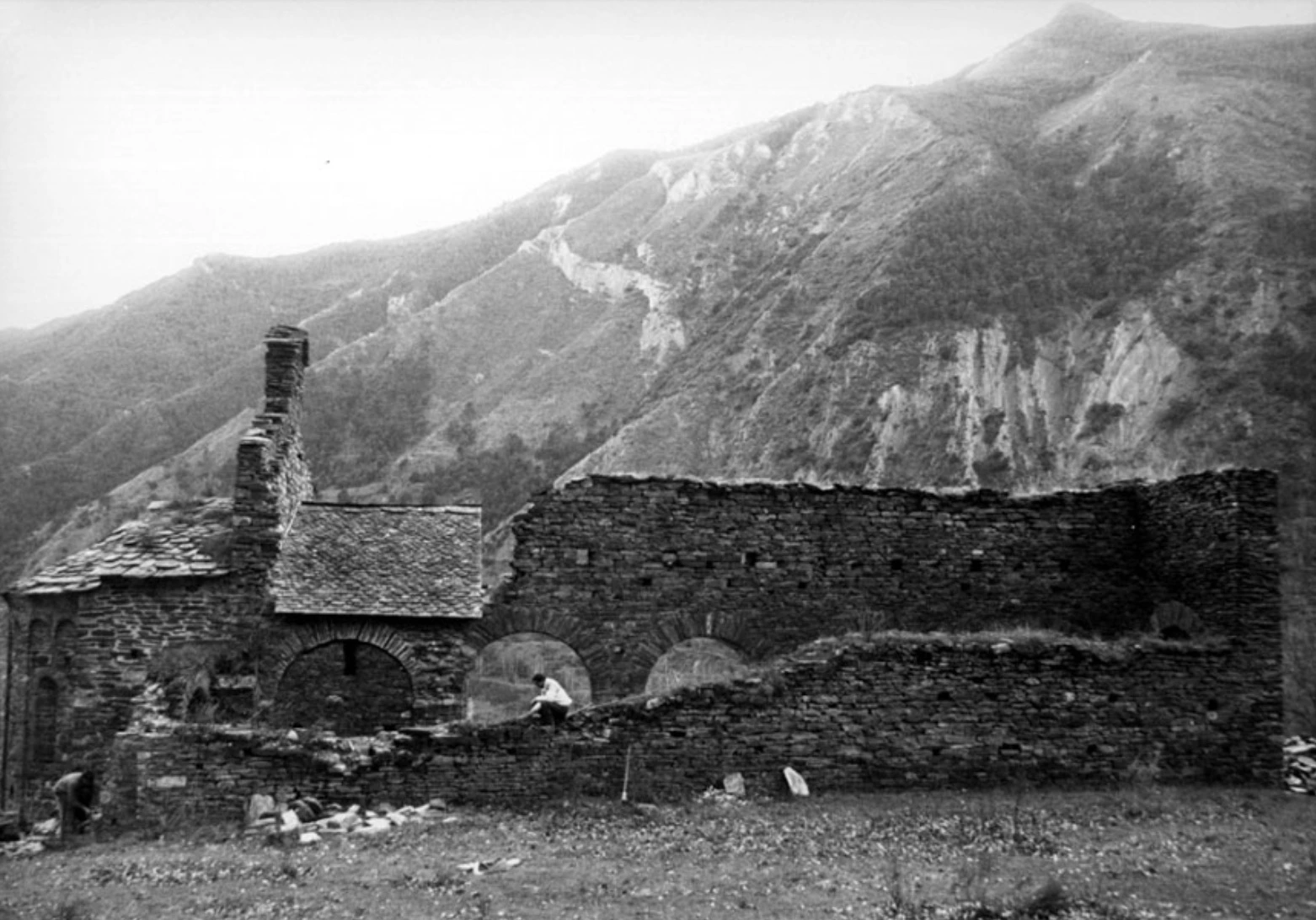
Cultural and Touristic Importance
The Monastery of Sant Pere del Burgal is a symbol of Catalonia’s cultural heritage and an important tourist destination. Its location in the impressive landscape of the Catalan Pyrenees, along with its rich history and Romanesque architecture, attracts numerous visitors interested in history, art, and spirituality. Additionally, the monastery is part of the cultural itinerary known as “The Romanesque Route,” which promotes visits to various Romanesque monuments in Catalonia.
Conclusion
The Monastery of Sant Pere del Burgal is an excellent example of the architectural and artistic legacy of the Romanesque period in Catalonia. Its history, spanning more than a millennium, and its impressive architecture make it a site of great cultural and touristic importance. The conservation and promotion of this monastery ensure that future generations can appreciate and learn about this valuable historical heritage.
